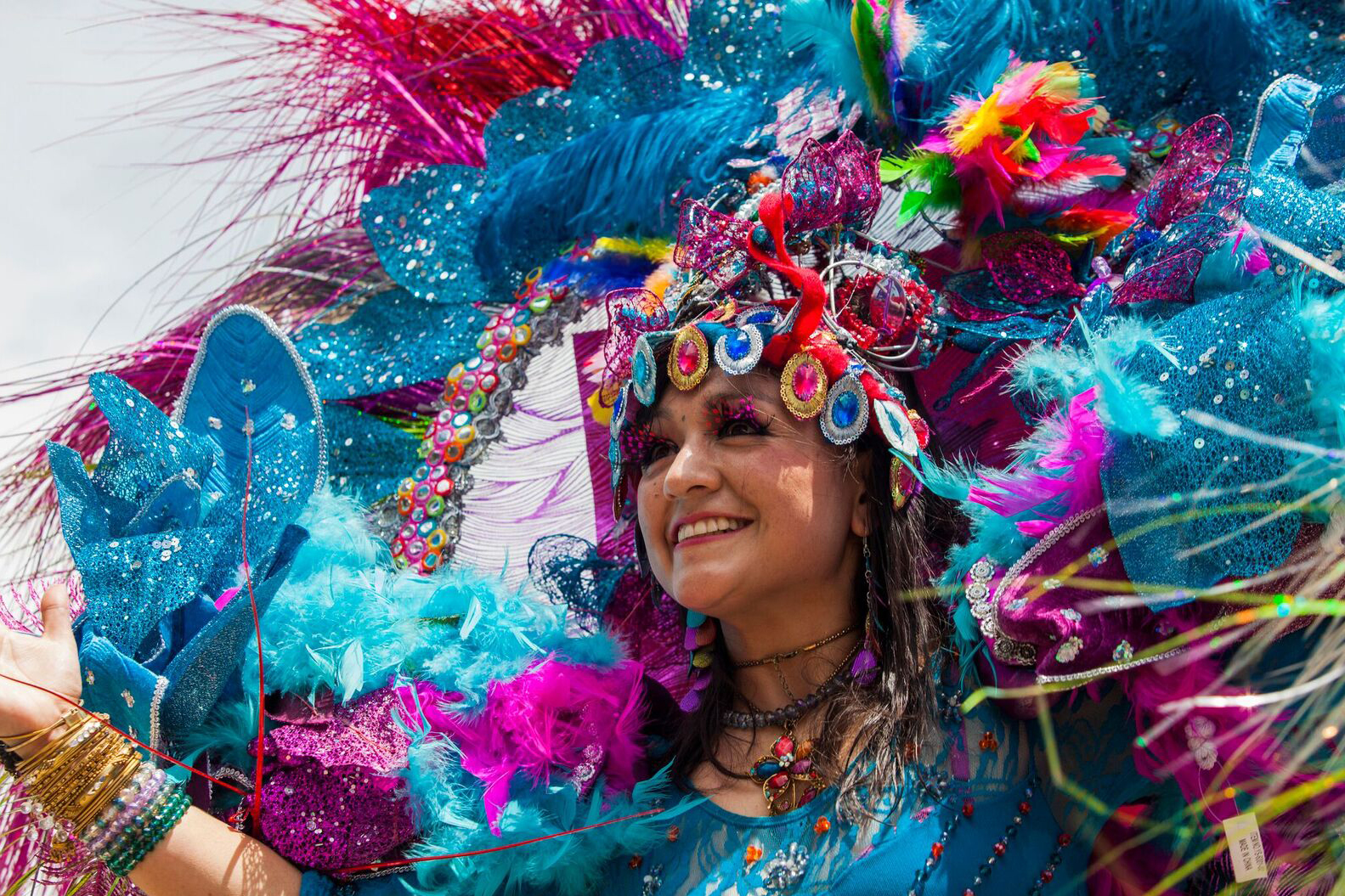The city of Puno, on the shores of Lake Titicaca, will become the folkloric capital of Peru during the first two weeks of February. Forty thousand dancers and musicians from approximately 170 groups of 13 provinces will celebrate the Fiesta de la Virgen de la Candelaria, one of the largest religious festivals in the Peruvian Andes.
One of the most important days of the festival is Thursday, February 8, when the Solemn Mass of the Eighth is celebrated and the procession in honor of the Blessed Virgin of the Candelaria, accompanied by sets of native dances (in typical and native costumes) and the traditional assembly of flower carpets. Sunday, February 11, is another important date, as it is held the Dance in Costumes of Light, in honor of the Blessed Virgin of Candelaria. On 12 and 13 of the same month, groups of dancers and musicians parade through the main streets of the city of Puno.
It is worth mentioning that there are three axes that characterize the party. The first, a great religious devotion maintained for centuries and which has become one of the most impressive religious manifestations in America. The second is music and dance: the participating groups rehearse throughout the city of Puno and this allows an egalitarian and intercultural coexistence between children, youth and adults. As an example, we can name the ‘Barrio del sikuris Mañazo’, one of the oldest and most representative dance groups of the festival, with more than 120 years of activity. The third axis is the preparation of costumes for groups of dancers. This allows young people to transmit traditions, techniques, patterns and symbols from generation to generation.
Since 2014, the festival has been part of UNESCO’s List of Intangible Cultural Heritage of Humanity (United Nations Educational, Scientific and Cultural Organization). Peru also safeguarded the feast of Virgen de la Candelaria, proclaiming the city of Puno “Capital of Peruvian Folklore”. Since 2003, it is considered the country’s cultural heritage.
Carnival in Peru
As in Brazil, carnival is a very strong and representative cultural manifestation in Peru. All regions of the country celebrate carnival, in February or March (according to the religious calendar), for several weeks, with festivities in the streets, dances, celebrations, songs, dances, parades of floats and gastronomy.
The Ayacucho Carnival (in southern Peru) is one of the most authentic cultural manifestations preserved by the local population, declared Cultural Patrimony of the Nation, by the National Institute of Culture of Peru. In it, the creativity and sensitivity of the Ayacucho people are expressed through fantasies and masks, urban and rural dances, new songs and satires (created according to the present moment), spicy impromptu and the declaration of “No Carnavalon” (King Momo) . The particularities of the ayacucho carnival carry in their spirit the authentic essence that mixes the infantile, juvenile and adult joy; an attraction for those who want to play, dance, have fun and enjoy the beauty of the city and its surroundings, as well as the warm welcome of the people.

Marco Garro
In Cajamarca (in the north of Peru), known as the “Capital of the Peruvian Carnival”, stand out contests of improvisations full of daring verses, also called “killinas”, and the strong and happy presence of “No Carnavalón”.
In Iquitos (capital of the Peruvian Amazon), the carnival is celebrated with dances through the streets, which revolve around the “Humshas”, palm trees placed by the residents of the neighborhoods, and water jokes among the revelers. Here, Loretana cuisine is also widely considered at this time.
Arequipa (South of Peru) brings in its carnival a real competition between the young singles and their respective neighborhoods, in which they play carnival and fight for the title of who else dances, who has the most beautiful typical dress, who celebrates with more fury, grace and joy.
